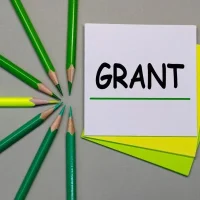In the realm of non-governmental organizations (NGOs), the ability to effectively monitor and evaluate funded projects is paramount. This process not only ensures accountability to donors but also enhances the overall impact of the initiatives undertaken. Monitoring involves the continuous assessment of project activities, while evaluation focuses on measuring the outcomes and impacts against the set objectives.
Together, these processes provide a comprehensive understanding of a project’s effectiveness, allowing organizations to make informed decisions and adjustments as necessary. The significance of monitoring and evaluation (M&E) extends beyond mere compliance; it serves as a vital tool for learning and improvement. By systematically collecting data and analyzing results, NGOs can identify best practices, recognize challenges, and adapt strategies accordingly.
This iterative process fosters a culture of transparency and responsiveness, which is essential for building trust with stakeholders, including funders, beneficiaries, and community members. Ultimately, robust M&E practices empower NGOs to demonstrate their value and secure future funding opportunities.
Project Management Software
Project management software has become an indispensable asset for NGOs striving to streamline their operations and enhance project delivery. These tools facilitate planning, execution, and monitoring of projects by providing a centralized platform for collaboration among team members. Popular options such as Asana, Trello, and Monday.com offer features that allow organizations to set timelines, assign tasks, and track progress in real-time.
This level of organization not only improves efficiency but also ensures that everyone involved is aligned with the project’s goals. Moreover, project management software often includes reporting functionalities that enable NGOs to generate insights into project performance. By visualizing data through dashboards and charts, organizations can quickly assess whether they are on track to meet their objectives.
This capability is particularly beneficial when preparing reports for funders or stakeholders, as it allows NGOs to present clear evidence of their progress. Additionally, many of these platforms offer integration with other tools, such as financial tracking systems or communication apps, creating a seamless workflow that enhances overall productivity.
Financial Tracking Tools
Effective financial management is crucial for NGOs to ensure that funds are utilized efficiently and transparently. Financial tracking tools provide organizations with the means to monitor expenditures, manage budgets, and generate financial reports. Software solutions like QuickBooks, Xero, and Wave Accounting are tailored to meet the unique needs of nonprofits, offering features such as grant tracking, expense categorization, and donor management.
These tools not only simplify the financial oversight process but also enhance accountability. By maintaining accurate records of all financial transactions, NGOs can easily demonstrate compliance with donor requirements and regulatory standards. Furthermore, financial tracking tools often include forecasting capabilities that allow organizations to project future funding needs based on current spending patterns.
This foresight is invaluable for strategic planning and can help NGOs identify potential funding gaps before they become critical issues.
Impact Assessment and Reporting Platforms
Impact assessment is a vital component of monitoring and evaluating funded projects, as it measures the tangible effects of an NGO’s work on its target population. Specialized platforms such as Logic Model Builder, ImpactMapper, and SurveyMonkey provide NGOs with the tools needed to design assessments that capture both qualitative and quantitative data. These platforms enable organizations to create surveys, conduct interviews, and analyze feedback from beneficiaries, ensuring that their evaluations are comprehensive and reflective of the community’s needs.
Reporting platforms play a crucial role in communicating the results of impact assessments to stakeholders. Tools like Tableau and Google Data Studio allow NGOs to visualize their findings in an engaging manner, making it easier for funders and partners to understand the significance of their work. By presenting data in a clear and compelling format, organizations can effectively advocate for continued support and demonstrate their commitment to achieving meaningful change.
Stakeholder Engagement and Communication Tools
Engaging stakeholders is essential for NGOs to build strong relationships with funders, beneficiaries, and community members. Communication tools such as Mailchimp for email marketing, Slack for team collaboration, and Zoom for virtual meetings facilitate ongoing dialogue between organizations and their stakeholders. These platforms enable NGOs to share updates on project progress, solicit feedback, and foster a sense of community among supporters.
Moreover, effective stakeholder engagement goes beyond mere communication; it involves actively involving stakeholders in the decision-making process. Tools like Miro or MURAL can be used for collaborative brainstorming sessions where stakeholders can contribute ideas and insights. This participatory approach not only enhances project relevance but also empowers beneficiaries by giving them a voice in shaping initiatives that affect their lives.
By prioritizing stakeholder engagement through these tools, NGOs can cultivate trust and strengthen partnerships that are vital for long-term success.
Data Analysis and Visualization Software
In an era where data-driven decision-making is paramount, NGOs must leverage data analysis and visualization software to extract meaningful insights from their monitoring and evaluation efforts. Tools like RStudio, SPSS, or Python libraries such as Pandas provide organizations with the capability to analyze large datasets effectively. By employing statistical methods and algorithms, NGOs can uncover trends, correlations, and patterns that inform their strategies.
Visualization software such as Power BI or Google Charts complements data analysis by transforming complex data into easily digestible visuals. These tools allow NGOs to create interactive dashboards that showcase key performance indicators (KPIs) at a glance. By presenting data visually, organizations can communicate their findings more effectively to stakeholders who may not have a technical background.
This clarity not only enhances understanding but also fosters greater engagement from funders and partners who are keen to see the impact of their investments. In conclusion, monitoring and evaluating funded projects is a multifaceted process that requires a combination of effective tools and strategies. By utilizing project management software, financial tracking tools, impact assessment platforms, stakeholder engagement resources, and data analysis software, NGOs can enhance their operational efficiency and demonstrate their impact more convincingly.
As the landscape of nonprofit work continues to evolve, embracing these technologies will be essential for organizations seeking to secure grants, forge partnerships, and achieve fundraising success in an increasingly competitive environment.









































